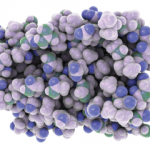Ms. Crow has had rheumatologists tell her at meetings that they don’t refer to occupational therapy as often because current medications have reduced or eliminated the more severe hand deformities that used to plague patients with RA. However, she passionately made the case for rheumatologists to consider the full context of a patient’s life and how their diagnosis may affect their functioning beyond their joints.
“Someone’s ability to function is not only dictated by the severity of their disease; it’s dictated by the environmental and contextual demands of their life. … Just because your patient’s bloodwork may look good and they don’t have severe deformities, doesn’t mean [their condition] doesn’t have a [negative] impact on their quality of life,” she said.
When referring patients to occupational therapy, rheumatologists should make a note in the referral about what the patient is struggling with. Another suggestion is to write, “Help with activities, daily living or joint production strategies or tools to decrease pain.”
Still, the occupational therapist will do a detailed interview to find out how to best help the individual in their personal context, the demands of their daily life and the degree of support they currently have.
Children
When asked about how occupational therapy can help children with rheumatic conditions, such as juvenile arthritis, Ms. Crow said the approach is similar to that used with adults in terms of exploring what is required of them to function daily.
Some of the education that goes on with children is geared toward their parents, teachers or coaches. Example: Parents may need to give their children some space.
“I think there’s a tendency in the parent population to help too much. They want to help their child, but if you don’t allow your child the opportunity to navigate and overcome things on their own, then it [may] become a learned-helplessness situation,” she said.
Another consideration is explaining to people in the child’s world that there will be daily fluctuations in what they are able to do—particularly with respect to fatigue, which is an often-overlooked symptom in pediatric patients.
Vanessa Caceres is a medical writer in Bradenton, Fla.
More Episodes
A new episode of ACR on Air comes out twice a month. Listen to this full episode and others online at acronair.org. Or download and subscribe wherever you get your podcasts.


